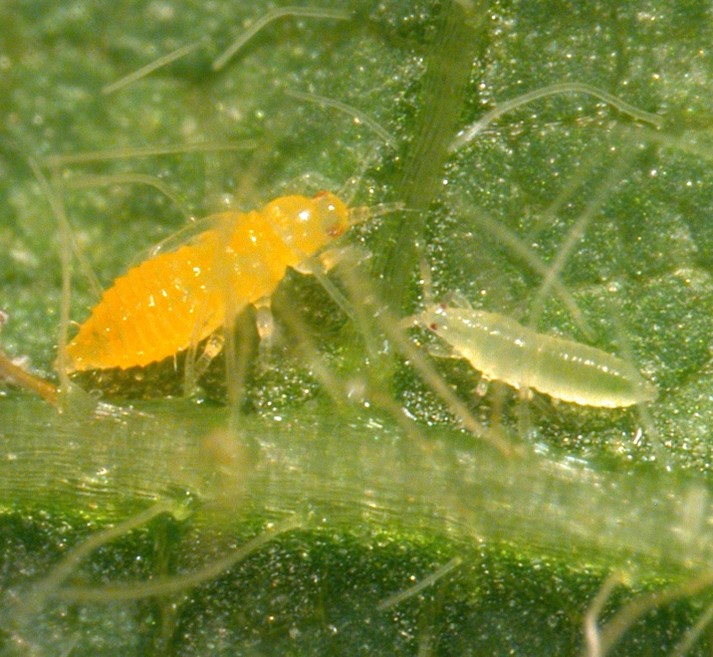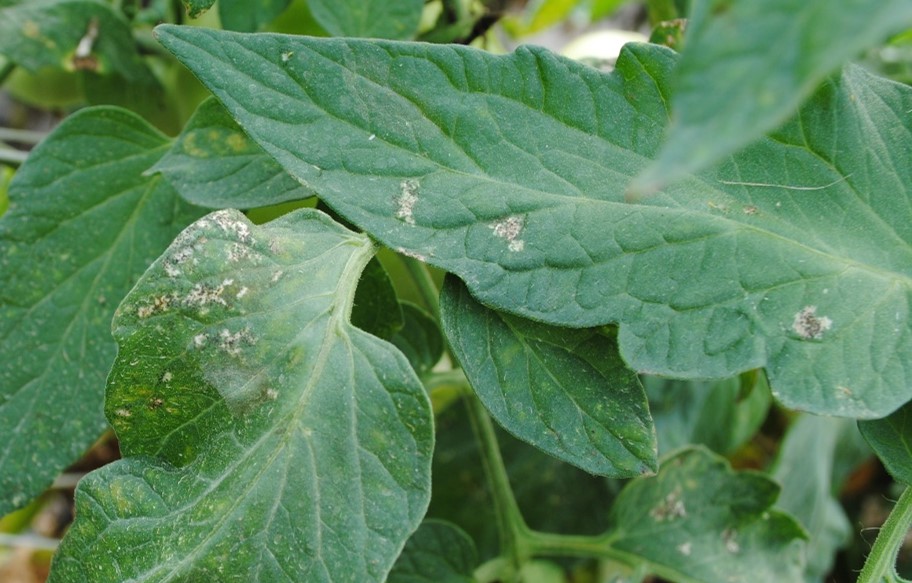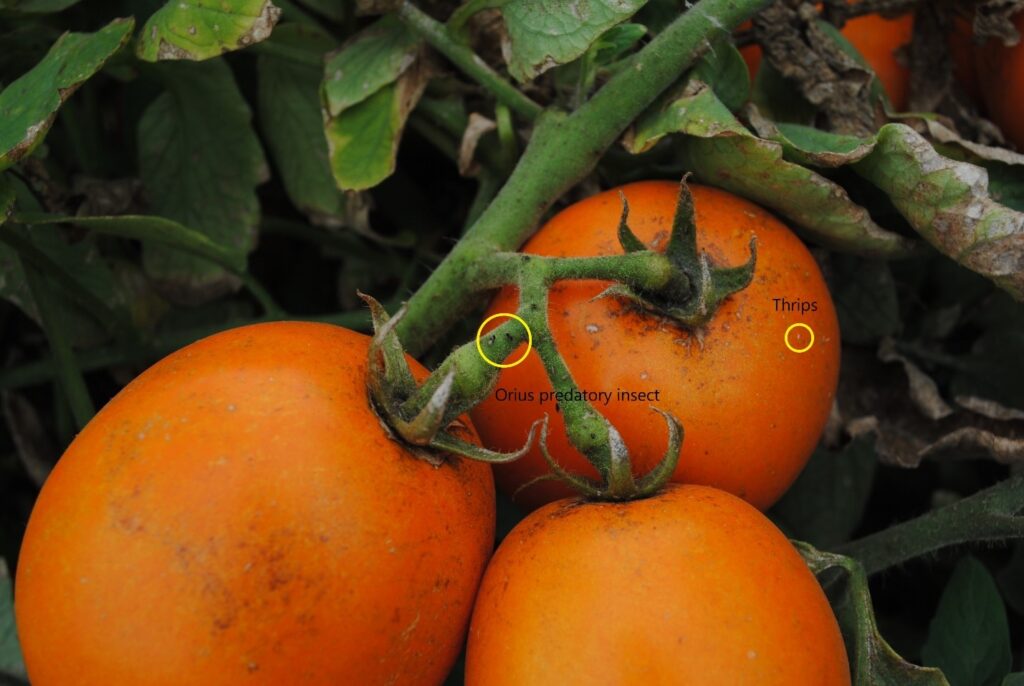Thrips are soft-bodied insects belonging to the order Thysanoptera. They are tiny, slender, and characterized by their fringed wings (Figure 1). While many thrips species are considered agricultural pests, some are beneficial predators. One important pest species is the western flower thrips (Frankliniella occidentalis; Figure 2), which can cause significant damage to crops. In contrast, there are also predatory thrips, such as the banded thrips (Aeolothrips fasciatus; Figure 3) that help suppress soft body pest populations.
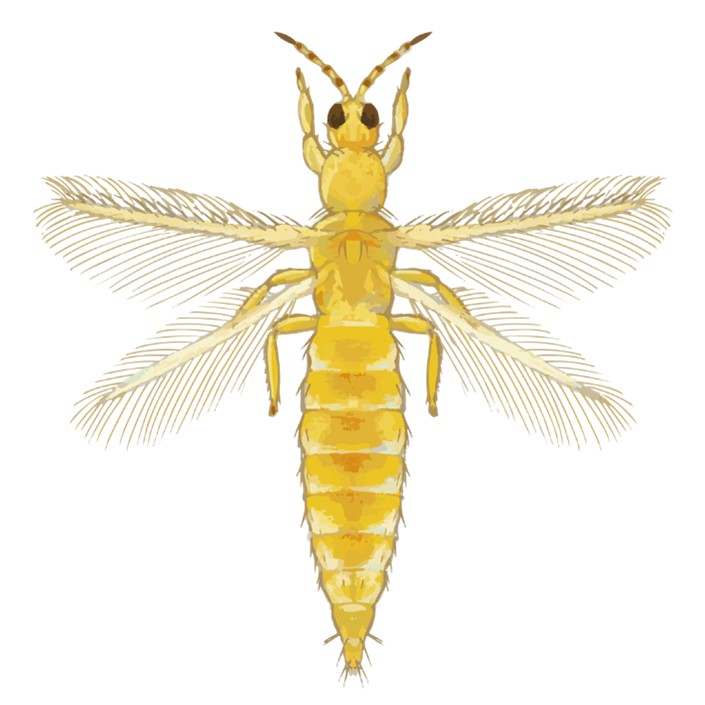
Figure 1. Thrips with fringed wings. Photo retrieved from https://commons.wikimedia.org/wiki/File:202202_Frankliniella_occidentalis.svg.
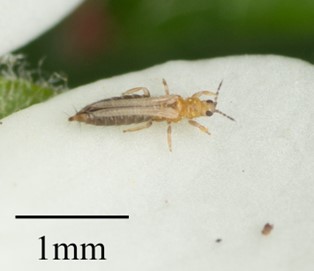
Figure 2. The western flower thrips (Frankliniella occidentalis) adult. Photo retrieved from https://commons.wikimedia.org/wiki/File:Frankliniella_occidentalis_14827651.jpg
Fun Fact: Thrips is always plural; you may have one thrips or 100 thrips.
Life cycle
Females of most plant-feeding thrips species lay their elongated, cylindrical to kidney-shaped eggs within plant tissue. These eggs hatch into larvae (Figure 4) that feed on the plant for several weeks before dropping to the soil to pupate. Adult thrips typically live for about a month, during which they feed, mate, and reproduce. Thrips can have multiple generations per year, and under warm conditions, their life cycle from egg to adult can be completed in as little as two weeks. Both larvae and adults prefer to feed on pollen, which is often found inside flowers.
Damage
Both larvae and adult thrips cause damage to plants. They puncture plant cells and feed on the contents, including xylem sap, often leaving behind dark frass spots (insect poo). The damage appears as silvery or bleached patches, as if the leaf surface has been rasped or scraped (Figure 5). While light feeding typically results in cosmetic damage, severe infestations can lead to leaf curling, stunted growth, and even plant death. When thrips feed directly on the fruits, they damage the appearance (Figure 6). In addition to direct feeding damage, thrips are important vectors of plant viruses. Species like the western flower thrips and onion thrips can transmit viruses such as Tomato spotted wilt virus (see this article), Tomato chlorotic spot virus, and Iris yellow spot virus. Virus symptoms vary depending on the host plant and environmental conditions; therefore, accurate diagnosis may require sample submission to the Plant and Pest Diagnostic Lab.
Monitor
Adult thrips become active in the spring and are most effectively monitored using yellow sticky traps, visual inspection, or by identifying feeding damage. Because thrips are small and difficult to detect, visual scouting is often focused on plant blooms, where they tend to concentrate. One effective monitoring technique is to shake flowers or leaves over a white sheet of paper and observe any thrips that fall onto the surface. It’s also helpful to inspect the bases of leaves and areas of new growth, where thrips may congregate. Sticky cards can be placed near flowers or young foliage to improve detection.
Management
Sanitation is a critical component in managing thrips and the viruses they transmit. Weeds and plant debris near susceptible crops should be removed to reduce potential sources of infestation. Reflective mulches can also be used to disrupt thrips’ ability to locate host plants by interfering with their visual cues. In addition to cultural controls, several natural enemies help suppress thrips populations. These include predatory thrips (Figure 3), green lacewing larvae, predatory mites, and minute pirate bugs (Figure 7). Natural enemies that forage at/in the soil can help suppress the pupal stages and include entomopathogenic nematodes, rove beetles (Atheta coriaria) and Stratiolaelaps scimitus (Hypoaspis miles) mites. Supporting these beneficial arthropods through habitat management or biological control strategies can enhance overall thrips management.

